Nowruz 1388, Persian New Year
Nowruz 1388, Persian New Year
As the spring's footsteps start tickling the ears, lilies, daffodils and narcissus wake up to bloom, the impatient Iranians awaiting the spring, set up a colorful celebration to give it a red carpet welcome. Nowruz is the Persians' longest and most cherished festivity, on which all Iranians celebrate the New Year with the nature's resurrection from withered winter. It is deeply rooted in Zoroastrianism and counts as the oldest Iranian festival. Nowruz ancientness, variety, colorfulness, and rich symbolism mark it off from its peers in other nations and countries.
Nowruz is the Celebration of Life; it is determined according to the spring equinox and coincides with March 21, or the previous/following day, marking the start of the spring in the northern hemisphere.
Nowruz's characteristic herald, the old tambourine man, Hajji Firuz, with black-painted face and a red garb on, goes out in the cities and villages and while dancing and singing gay and cheerful notes, spreads high spirits and delight among the public. He is the messenger of health, power, happiness and abundance in New Year. His traditional musical instruments are trumpet and tambourine; while his traditional song is "Hajji Firuz-e, Saali Ye Ruz-e", which means "It is Hajji Firuz, coming only once a year".
Along with his troupe of musicians, he strolls on the streets, alleyways, and other passages entertaining people. Generous people impressed by the performance often present the artists with some tip and at the end of the performance the members are invited to a nice Nowruzian meal, and finally granted an Eidi (Nowruz gift).
Esfand, the last month of the year is the high time for a welcoming preparation. To begin with, the housekeepers set out to do the spring-cleaning, "Khaane-Tekaani" in Persian, which mainly entails the washing of the carpets and the other must-wash items and furniture. The other preparation is growing "Sabzeh" (wheat, lentil, or barley seeds) in some pot, which is done about 2 or 3 weeks before Nowruz but today many people simply buy them. One other preparation to welcome Nowruz is "Nowruzian shopping", called "Kharid-e Nowruzi".It includes purchasing new clothes, sweets, flower (in particular hyacinths and tulips) and the articles of "Haft Sin ".
Number 'seven' has got a holy position in the Persian mythology. We are told of seven levels of earth and heaven, seven deities superior to others, seven constellations which controlled the fate of the mortals and even seven days in a week. Seven-S spread, in Persian called "Sofreye Haft Sin", is the inextricable component of all homes on Nowruz. Sofreh means spread or tablecloth and Haft Sin, seven-S. Zoroastrians of Iran used to decorate their Haft Sin in seven big trays each bearing seven kinds of foods. The role of Haft Sin is very comparable to that of the Christmas tree in the Christian countries. Each item has its own symbolism, which stems from the advent of the custom.



Haft Sin's most outstanding item is "Sabzeh" (the green sprouts of wheat, barley or lentil) which symbolizes rebirth and usually is beatified with a strip of red ribbon, while an orange may be placed atop. A glittering red or yellow "Seeb"(apple) is the second and stands for beauty and good health. "Samanu", kind of a sweet pudding or custard, is the next article symbolizing affluence. The following item stands for love and is called "Senjed", fruit of the oleaster or lotus tree. The forth one is "Seer" (garlic) and is the representative of medicine on the spread. Then there exists sumac berries, "Somaq", which epitomizes the color of the sunrise. And as the last article "Serkeh"(vinegar) epitomizes patience and age.
Different families or ethnicities may substitute some of the mentioned seven items with something else but those mostly accepted pieces were as enumerated. There also some articles whose initial is not "S", but count with the items of "Sofreye Haft-Sin". A book, preferably a religious one, an upright mirror, burning candles, colored eggs (as the Easter eggs), a bowl of water with an orange floating in, a bowl of water with a gold fish within, Iranian sweetmeats, confectioneries, different fruits, traditional Iranian pastries such as baghlava, "aajeel" (dried nuts, berries and raisins) which is another important component of the whole Nowruz festival, and the national colors of Iran.




Photos by: Vaahe, Pouria, Paris Marashi, Mohammad Sadeqi Fasai
Nowruz has its own particular dishes, too. "Sabzi-Polo Mahi", rice with green herbs and fish, is served on the night just preceding Nowruz, or on the same Nowruz day. On the next day "Reshte Polo", rice cooked with noodles is prepared. "Koku Sabzi" is served for the dinner and is made out of herbs and vegetable soufflé. On the last "Shab-e-Jom'e" -the eve of Friday- prior to Nowruz, "Polo" and "chicken" are served for supper.
Nowruz begins with "Saal Tahvil", which can be translated as year delivery. It is the very first instant in the New Year; the exact moment of the spring equinox. Everybody in the family, dressed up in his or her new clothes, gathers around the Haft Sin spread looking forward to "Saal Tahvil". As the countdown ushers in the New Year, the members of the family, rejoicing, cheer up, hug and kiss each other, and exchange Nowruz greetings, "Eid-e Shoma mobarak!" or "Sal-e No Mobarak" (Happy New Year). Now everyone, especially the children and the youth, moves on to make the rounds of the elders of the family first, then the rest of their family and finally their friends and the neighborhood. Adults, too, have a set schedule of visits and receiving visitors.
This custom that first the young call on the elder demonstrates the respect that Iranians pay to the aged people. Visits are short, so that a typical visit takes one about 30 minutes. "Eidi", new-year gift, is another characteristic feature of Nowruz. Within the family, it is the duty of the head of the household to grant the Eidi to the members of the family, the same can be true of the visitors as well. Of course, in the case of visitors only those who are considered younger, or lower in rank, would receive "Eidi". It is to be mentioned that the young visitors do not bring any gifs with them, and may only receive a gift. The rounds of visitations might last as long as twelve days, up to the day of "Sizdah Bedar".
Among all Persian ancient ceremonies, Nowruz with its different aspects in every region of the country has got no more real, fresher and deeper peer. Nowruz repeats and renews everything, generates and revives the nature and influences Iranian creative soul, emotion and thought.

03/19/2009
By Hamzeh Abbasi
|

03/19/2009
By Alieh Saadatpour
|

03/19/2009
By Mostafa Saghari
|

03/19/2009
By Nazanin Banani
|

03/19/2009
A plate or bowl of Samanu is a traditional component of the Haft sin table.
By Behzad N.
|

03/19/2009
By Rastin Mehr
|

03/19/2009
By Ehsan Khakbaz
|

03/19/2009
By Hamed Saber
|

03/19/2009
By Shahrzad Alemfathi
|

03/19/2009
By Seyed Jazayeri
|

03/19/2009
By Alireza Najafian
|

03/07/2009
By Mehdi Ghasemi
|

03/07/2009
By Farshad Palideh
|

03/18/2008
By Farshad Palideh
|

03/18/2008
By Farshad Palideh
|

03/18/2008
By Farshad Palideh
|

03/18/2008
By Farshad Palideh
|

03/18/2008
By Farshad Palideh
|

03/18/2008
By Rob & Ale
There are two antechambers beside the main hall of Chehel Sotun. This fresco, found in the southern antechamber, depicts Chaharshanbe Suri, or 'Red Wednesday', as held on the last wednesday of the year. Dating back to Zoroastrian times, it is a celebration of the light winning over darkness. The flames that seem more like an eruption on the horizon can be related to the ritual of making fires and jumping over them, whilst singing traditional songs.
|

03/18/2008
By Farshad Palideh
|

03/18/2008
By Farshad Palideh
|

02/14/2006
By Alireza Firouzi
|

02/14/2006
By Alireza Firouzi
|

02/14/2006
By Alireza Firouzi
|

02/14/2006
By Alireza Firouzi
|

02/14/2006
By Alireza Firouzi
|

02/14/2006
By Alireza Firouzi
|

02/14/2006
By Alireza Firouzi
|

02/14/2006
By Alireza Firouzi
|

02/14/2006
By Alireza Firouzi
|

02/15/2006
By Alireza Firouzi
|

02/15/2006
By Alireza Firouzi
|

02/15/2006
By Alireza Firouzi
|

02/15/2006
By Alireza Firouzi
|

02/14/2006
By Alireza Firouzi
|

01/29/2009
Considered one of the biggest Persian festivities in ancient times, Jashn-e-Sadeh is still celebrated by Zoroastrians throughout the world. Sadeh is a mid winter festival celebrated fifty days before Nowruz (the Persian New Year) to honor fire and to defeat darkness, frost and cold. More about Jashn-e Sadeh Photo by Farshad Palideh
|

01/29/2009
Considered one of the biggest Persian festivities in ancient times, Jashn-e-Sadeh is still celebrated by Zoroastrians throughout the world. Sadeh is a mid winter festival celebrated fifty days before Nowruz (the Persian New Year) to honor fire and to defeat darkness, frost and cold. More about Jashn-e Sadeh Photo by Farshad Palideh
|

01/29/2009
Considered one of the biggest Persian festivities in ancient times, Jashn-e-Sadeh is still celebrated by Zoroastrians throughout the world. Sadeh is a mid winter festival celebrated fifty days before Nowruz (the Persian New Year) to honor fire and to defeat darkness, frost and cold. More about Jashn-e Sadeh Photo by Farshad Palideh
|

01/29/2009
Considered one of the biggest Persian festivities in ancient times, Jashn-e-Sadeh is still celebrated by Zoroastrians throughout the world. Sadeh is a mid winter festival celebrated fifty days before Nowruz (the Persian New Year) to honor fire and to defeat darkness, frost and cold. More about Jashn-e Sadeh Photo by Farshad Palideh
|

01/29/2009
Considered one of the biggest Persian festivities in ancient times, Jashn-e-Sadeh is still celebrated by Zoroastrians throughout the world. Sadeh is a mid winter festival celebrated fifty days before Nowruz (the Persian New Year) to honor fire and to defeat darkness, frost and cold. More about Jashn-e Sadeh Photo by Farshad Palideh
|

01/29/2009
Considered one of the biggest Persian festivities in ancient times, Jashn-e-Sadeh is still celebrated by Zoroastrians throughout the world. More about Jashn-e Sadeh Photo by Farshad Palideh
|

01/29/2009
Sadeh is a mid winter festival celebrated fifty days before Nowruz (the Persian New Year) to honor fire and to defeat darkness, frost and cold. More about Jashn-e Sadeh Photo by Farshad Palideh
|

01/29/2009
Considered one of the biggest Persian festivities in ancient times, Jashn-e-Sadeh is still celebrated by Zoroastrians throughout the world. More about Jashn-e Sadeh Photo by Farshad Palideh
|

01/29/2009
Considered one of the biggest Persian festivities in ancient times, Jashn-e-Sadeh is still celebrated by Zoroastrians throughout the world. More about Jashn-e Sadeh Photo by Farshad Palideh
|

01/29/2009
Considered one of the biggest Persian festivities in ancient times, Jashn-e-Sadeh is still celebrated by Zoroastrians throughout the world. More about Jashn-e Sadeh Photo by Farshad Palideh
|

01/29/2009
Sadeh is a mid winter festival celebrated fifty days before Nowruz (the Persian New Year) to honor fire and to defeat darkness, frost and cold. More about Jashn-e Sadeh Photo by Farshad Palideh
|

01/29/2009
Considered one of the biggest Persian festivities in ancient times, Jashn-e-Sadeh is still celebrated by Zoroastrians throughout the world. Sadeh is a mid winter festival celebrated fifty days before Nowruz (the Persian New Year) to honor fire and to defeat darkness, frost and cold. More about Jashn-e Sadeh Photo by Farshad Palideh
|

01/29/2009
Considered one of the biggest Persian festivities in ancient times, Jashn-e-Sadeh is still celebrated by Zoroastrians throughout the world. More about Jashn-e Sadeh Photo by Farshad Palideh
|

01/29/2009
Considered one of the biggest Persian festivities in ancient times, Jashn-e-Sadeh is still celebrated by Zoroastrians throughout the world. More about Jashn-e Sadeh Photo by Farshad Palideh
|

01/29/2009
Considered one of the biggest Persian festivities in ancient times, Jashn-e-Sadeh is still celebrated by Zoroastrians throughout the world. More about Jashn-e Sadeh Photo by Farshad Palideh
|

01/07/2009
Muharram in Iran By: Farshad Palideh
|

01/07/2009
Muharram in Iran By: Farshad Palideh
|

01/07/2009
Muharram in Iran By: Farshad Palideh
|

01/07/2009
Muharram in Iran By: Farshad Palideh
|

01/07/2009
Muharram in Iran By: Farshad Palideh
|

01/07/2009
Muharram in Iran By: Farshad Palideh
|

01/07/2009
Muharram in Iran By: Farshad Palideh
|

01/07/2009
Muharram in Iran By: Farshad Palideh
|

01/07/2009
Muharram in Iran By: Farshad Palideh
|

01/07/2009
Muharram in Iran By: Farshad Palideh
|

01/07/2009
Muharram in Iran By: Farshad Palideh
|

01/07/2009
Muharram in Iran By: Farshad Palideh
|

01/07/2009
Muharram in Iran By: Farshad Palideh
|

01/07/2009
Muharram in Iran By: Farshad Palideh
|

12/13/2008
Kormanj Girl - Darbandi Village, Daregaz, Razavi Khorasan
|

02/21/2005
Persian Women dancing. From a wall painting at "Hasht Behesht Palace" (Palace of 8 heavens), Isfahan, Iran. Photo by User Zereshk - Wikipedia
|

11/01/2008
Young Shepherd Dancing, Autumn in Iran - Toshan Village, Gorgan Province
Photo: Mannan Khorasani
|

02/21/2005
Persian Dance Festival, Tehran, 2008
Photo: Farshad Palideh
|

02/21/2005
Persian Dance Festival, Tehran, 2008
Photo: Farshad Palideh
|

02/21/2005
Persian Dance Festival, Tehran, 2008
Photo: Farshad Palideh
|

02/07/2007
Darbandi Village, Daregaz, Razavi Khorasan
Photo: Ali Seifuddin
|

02/09/2007
Darbandi Village, Daregaz, Razavi Khorasan
Photo: Ali Seifuddin
|

02/09/2007
Darbandi Village, Daregaz, Razavi Khorasan
Photo: Ali Seifuddin
|

02/09/2007
Darbandi Village, Daregaz, Razavi Khorasan
Photo: Ali Seifuddin
|

02/09/2007
Darbandi Village, Daregaz, Razavi Khorasan
Photo: Ali Seifuddin
|

09/02/2008
Iran enjoys significant potentialities in tourism, with the 70-degree Lout Desert, the world's hottest place, being a case in point.
Some 70 degrees Celsius (158 degrees Fahrenheit) in the shadow is the hottest temperature recorded for a desert - and the spot happens to be in Iran.
The desert is so awe-inspiring that penetrating its unfathomable charm and mystery has turned out to be an unattainable desire of nature travelers. (Photo: Abbas Jafari)
|

09/02/2008
Iran enjoys significant potentialities in tourism, with the 70-degree Lout Desert, the world's hottest place, being a case in point.
Some 70 degrees Celsius (158 degrees Fahrenheit) in the shadow is the hottest temperature recorded for a desert - and the spot happens to be in Iran.
The desert is so awe-inspiring that penetrating its unfathomable charm and mystery has turned out to be an unattainable desire of nature travelers. (Photo: Abbas Jafari)
|

08/18/2008
Photo by Hamed Saber (.flickr.com/photos/hamed/)
|

08/18/2008
Turquoise is rare and valuable in finer grades and has been prized as a gem and ornamental stone for thousands of years owing to its unique hue. In recent times turquoise, like most other opaque gems, has been devalued by the introduction of treatments, imitations, and synthetics onto the market, some difficult to detect even by experts.
Iran, for at least 2,000 years, the region once known as Persia, has remained the most important source of turquoise, for it is here that fine material is most consistently recovered. This "perfect colour" deposit, which is blue naturally, and turns green when heated due to dehyration, is restricted to a mine-riddled in Neyshabur,[5][6][7] the 2,012-metre mountain peak of Ali-mersai, which is tens of kilometers from Mashhad, the capital of Khorasan province, Iran. A weathered and broken trachyte is host to the turquoise, which is found both in situ between layers of limonite and sandstone, and amongst the scree at the mountain's base. These workings, together with those of the Sinai Peninsula, are the oldest known.
Iranian turquoise is often found replacing feldspar. Although it is commonly marred by whitish patches, its colour and hardness are considered superior to the production of other localities. Iranian turquoise has been mined and traded abroad for centuries, and was probably the source of the first material to reach Europe.
Photo by Horizon (flickr.com/photos/horizon/)
|

08/18/2008
Photo: Alireza Najafian (flickr.com/photos/alirezanajafian/)
|

08/01/2008
Iranian Leopards are very hard to see. After 6 months try for photography of this very hard subject, in early morning of November 2005 in one quick sighting, I shot the photo. (November 2005)
Tandoureh National Park and Protected Area (Northeastern of Iran)
Daregaz City, Razavi Khorasan Province
Photo: Seyed Babak Musavi
|

03/25/2007
Saraye Moshir, an old caravansary in the Bazaar-e Vakil, at Shiraz, Fars province, Iran
Photo: Ehsan Mohammadi (picasaweb.google.com/ehsanm1986/)
|

03/25/2007
Golabgiri (Niyasar, Isfahan)
Photo: Ehsan Mohammadi (picasaweb.google.com/ehsanm1986/)
|

03/25/2007
Rishkhar Village, near Kabkan and Darbandi Zhour (Daregaz City, Razavi Khorasan)
Photo: Ehsan Mohammadi (picasaweb.google.com/ehsanm1986/)
|

07/27/2008
The Shooshtar Waterfalls are considered to be an attractive historical site. They are located alongside a branch of the Gerger, near Sika. These waterfalls were constructed in the year 1233 AH, in order to protect the Mizan Dam. In the same year in order to prevent the destruction of the dam, another dike was constructed. Thence outlets of the Mizan Dam was blocked and the course of Gerger River dried up.
The Gerger Dam was also constructed on the course of this river and some holes were constructed on the top of this dam, between the two scarps of the river overlooking the valley of Gerger River in the midst of the rocks in order to conduct the water to flow through the holes, thus creating the present waterfalls.
In this way the probability of the destruction of dam decreased. Since the construction of the Koohrang Tunnel which transfers the water from the Karoon to the Zayandeh Rood River, and with the construction of Shahid Abbaspour Dam, the flow of the waterfalls have considerably decreased. But need less to say that these waterfalls are still interesting and wonderful, and account for as one of the most important attractive sites of Shooshtar city.
Photo: Ehsan Mohammadi (picasaweb.google.com/ehsanm1986/)
|

07/27/2008
The Shooshtar Waterfalls are considered to be an attractive historical site. They are located alongside a branch of the Gerger, near Sika. These waterfalls were constructed in the year 1233 AH, in order to protect the Mizan Dam. In the same year in order to prevent the destruction of the dam, another dike was constructed. Thence outlets of the Mizan Dam was blocked and the course of Gerger River dried up.
The Gerger Dam was also constructed on the course of this river and some holes were constructed on the top of this dam, between the two scarps of the river overlooking the valley of Gerger River in the midst of the rocks in order to conduct the water to flow through the holes, thus creating the present waterfalls.
In this way the probability of the destruction of dam decreased. Since the construction of the Koohrang Tunnel which transfers the water from the Karoon to the Zayandeh Rood River, and with the construction of Shahid Abbaspour Dam, the flow of the waterfalls have considerably decreased. But need less to say that these waterfalls are still interesting and wonderful, and account for as one of the most important attractive sites of Shooshtar city.
Photo: Ehsan Mohammadi (picasaweb.google.com/ehsanm1986/)
|

07/23/2008
Kaboodwall Waterfall, Near Ali Abad Katool, Golestan Province
Photo by Ehsan Abbasi
|

07/23/2008
Masoole Village, Gilan Province
Photo by Hossein Rouki
|

07/23/2008
Iran's biggest ancient brick and stone castle. Rudkhan Castle, located 25 km southwest of Fooman city north Iran, is a military complex which had been constructed during the Seljuk Dynasty. The Castle is built on two tips of a mount, with an area of five hectares.
Its architects have benefited from natural mountainous features in the construction of the fort. Also a river known as 'Rudkhan Castle River' exist on the right side of the castle, which originates from the heights and flows from south to north.
Rudkhan Castle occupies an area of about 5 hectares and sits at the two peaks of a mountain at elevations of 715 and 670 meters and is fortified by strong fortifications and battlements at a length of 1,550 meters. The castle's 42 towers still stand intact.
After crossing a mountainous winding route and passing dense and very beautiful jungles, the first thing that the traveler discovers is the castle's big entrance gate which is grand and huge.
Photo by Hossein Karimi
|

07/09/2008
Qara Kelisa (The black Church) near Chaldoran, West Azerbaidjan, Iran.
Photo: Novecentino (flickr.com/photos/novecentino/)
|

07/09/2008
Iran's Black Church, an ancient Armenian Christian place of worship, stands near Chaldoran, 650 km (404 miles) northwest of Tehran, close to the borders of Turkey and Armenia.
Photo: fabdany (flickr.com/people/fabdany/)
|

07/09/2008
Qara Kelisa (The black Church) near Chaldoran, West Azerbaidjan, Iran.
Picture taken in June 2005 by F.Dany
|

07/03/2008
Zoroastrian Fire Temple
|

07/03/2008
Photo: John Beton
|

07/03/2008
Photo by: Hadi Fooladi
|

07/03/2008
Photo by: Germán Vogel
|

06/30/2008
Takht-e Soleiman, Takab
Photo by: Hamid Rouhshad
|

06/30/2008
Takht-e Soleiman, Takab
Photo by: Hamid Rouhshad
|

06/30/2008
Takht-e Soleiman, Takab
Photo by: Hamid Rouhshad
|

06/30/2008
Takht-e Soleiman, Takab
Photo by: Hamid Rouhshad
|

06/29/2008
Harandeh, Tehran-Firouzkouh Road
Photo: Ehsan Mohammadi (v-n.ir)
|

06/13/2008
Photo: Hamidreza Tavakoli
|

06/13/2008
Photo: La Stregadelnord
|

06/13/2008
Photo: La Stregadelnord
|

06/13/2008
Photo: Amir Mohammad
|

06/01/2008
Photo: Farshad Palideh
|

06/01/2008
The glorious architecture of Iran, like a piece of gem, has been constantly glittering among other architectural monuments of the world and has occupied a worthy place in the world of art. It was in the reign of the Safavids, that the city of Isfahan reached such a renown and elegance which was called " half of the world".
Among what has remained from the age of the Safavids, there still exists a school, bazaar and caravansaray complex which sparkles like a piece of jewelry at the side of Chahar Bagh street.
This complex was built at the time of king Sultan Hossein of Safavids about 300 years ago. King Soltan Hossein attributed this magnificent complex of building to his mother. That is why; it is called "the school and caravansaray of Madar-shah" (which means king's mother).
|

06/01/2008
Esfahan Bazaar
|

06/01/2008
Emam Mosque, Naghshe Jahan Square
|

06/01/2008
Sheikh Lotfollah Mosque, Esfahan
|

06/01/2008
Baghe Melli Gate, Tehran
|

06/01/2008
Fooman, Gilan Province (North of Iran)
|

05/24/2008
Pear Orchard - Shiraz
|

05/24/2008
Latian Lake near Tehran
|

05/24/2008
Uramanat, Kurdistan Province (West of Iran)
|

05/24/2008
Sobatan Village, Ardebil
Photo: Ali Vakilirad
|
منبع :انجمن گسترش گردشگری ایران، ایرپدیا
یزدفردا
-
نویسنده : یزد فردا
-
منبع خبر : خبرگزاری فردا
http://www.yazdfarda.com/news/af/15967/







































































































































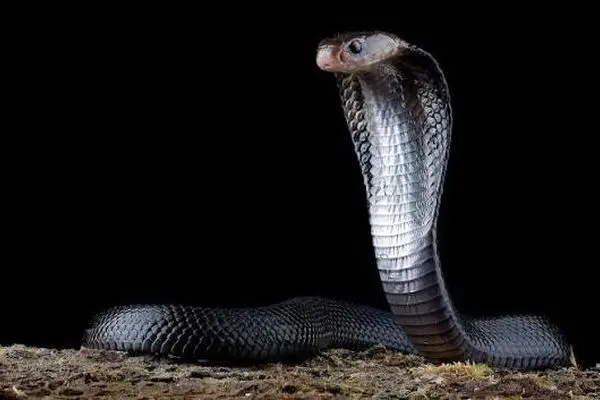

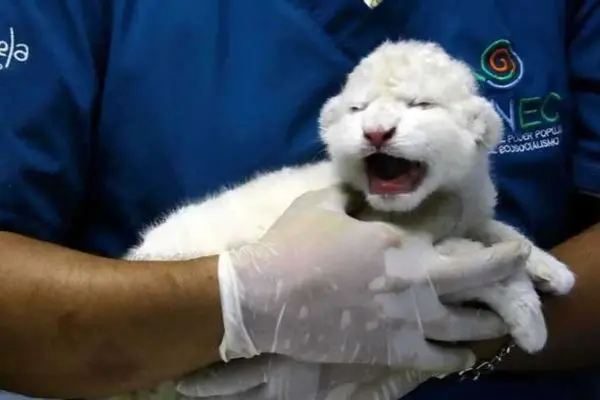



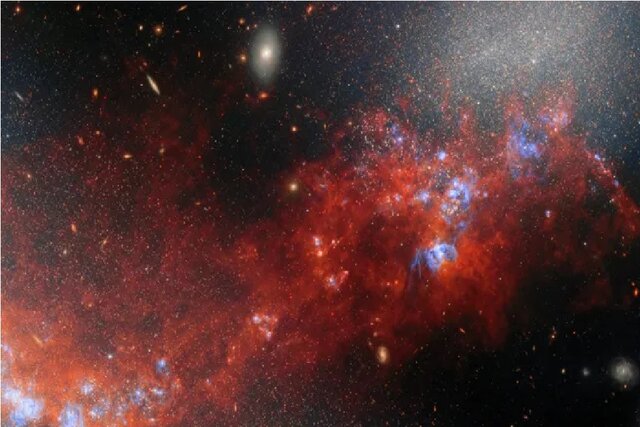

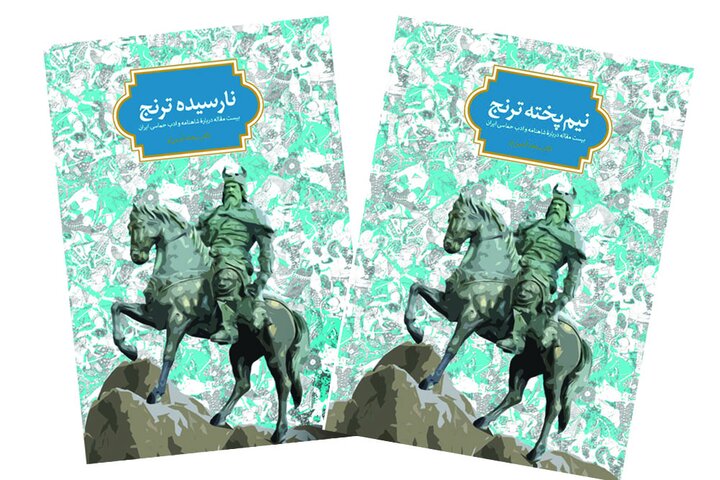
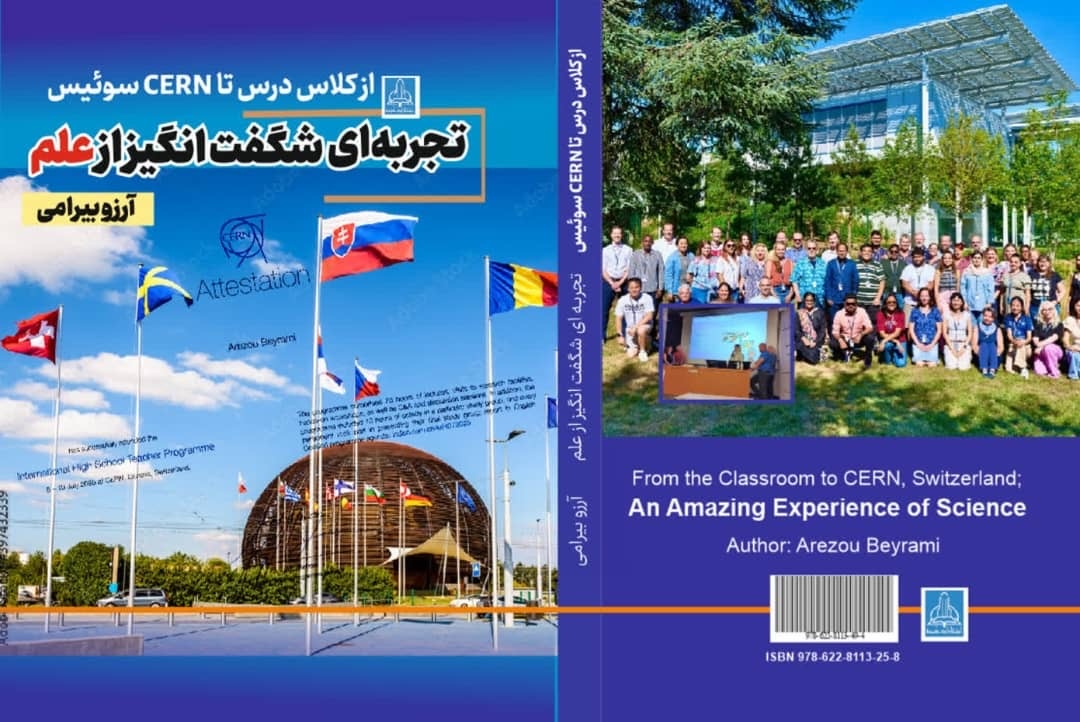
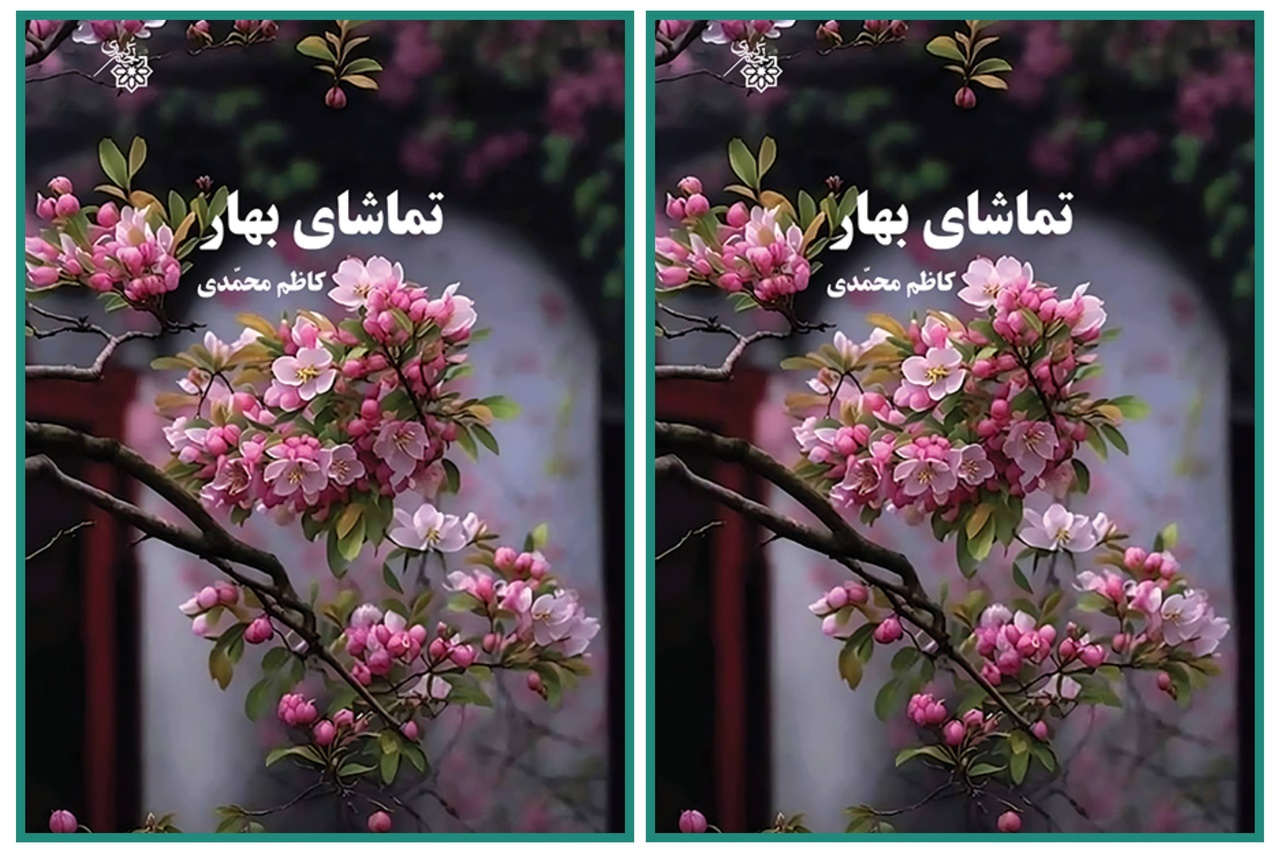
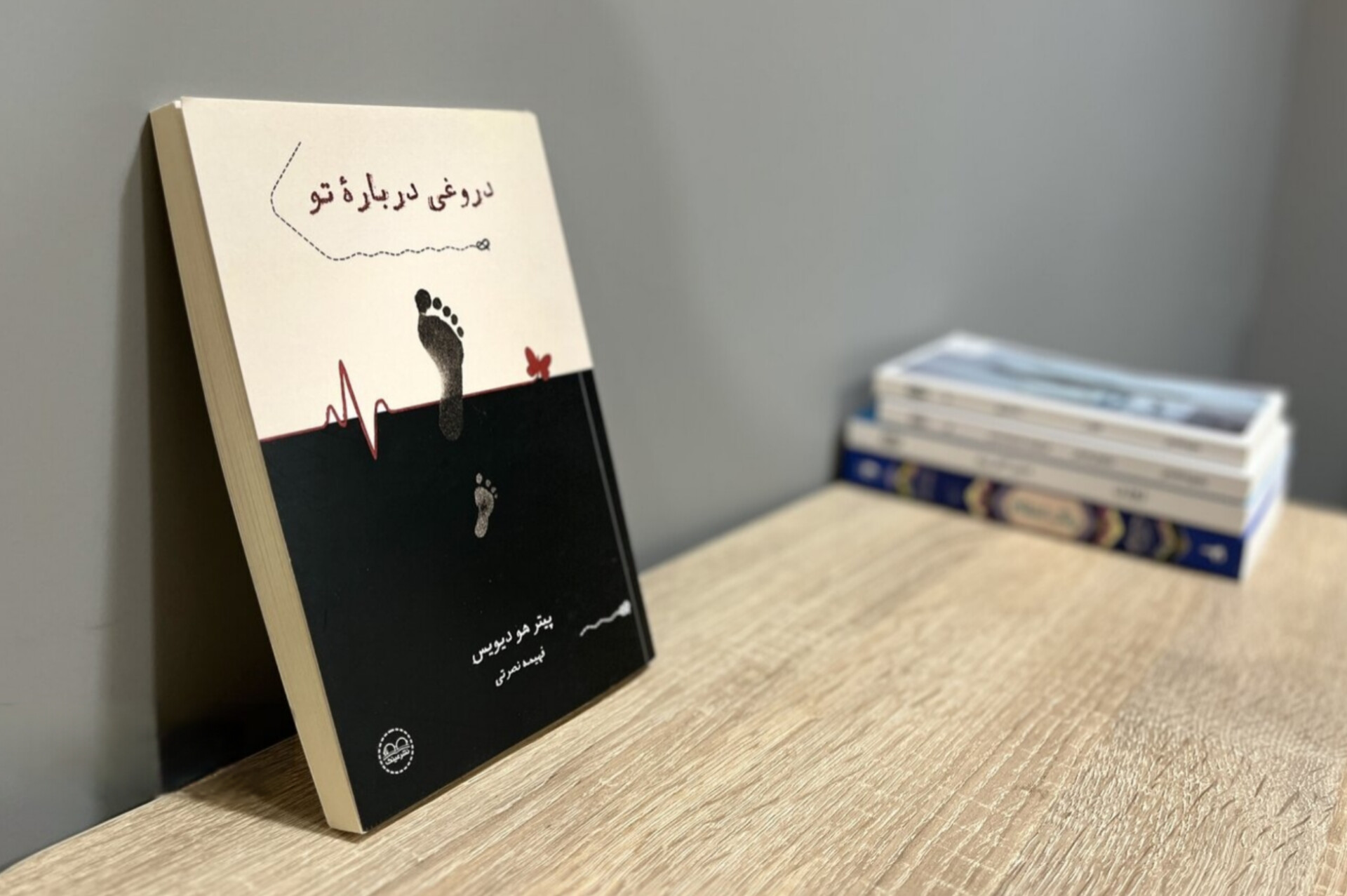




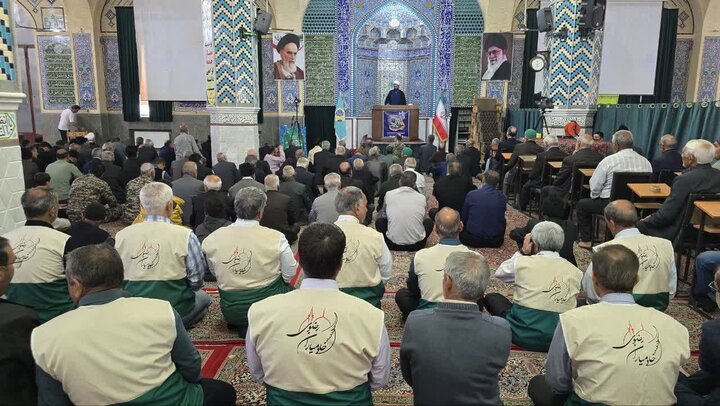
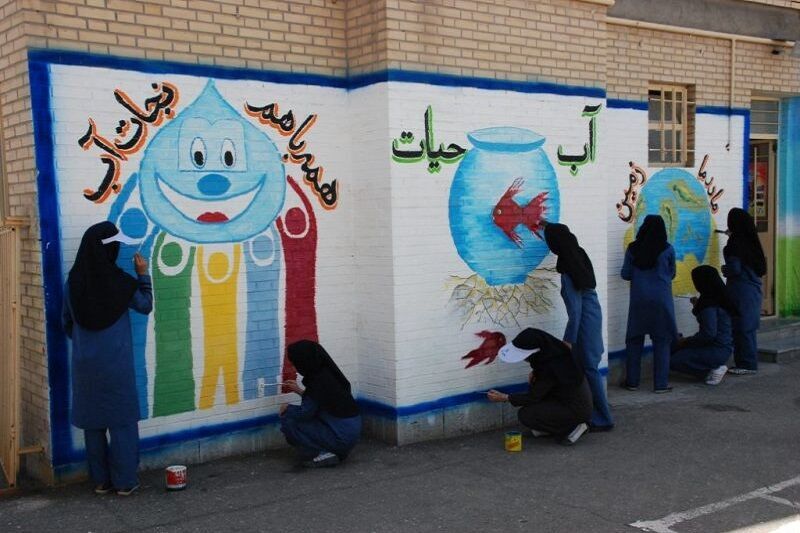
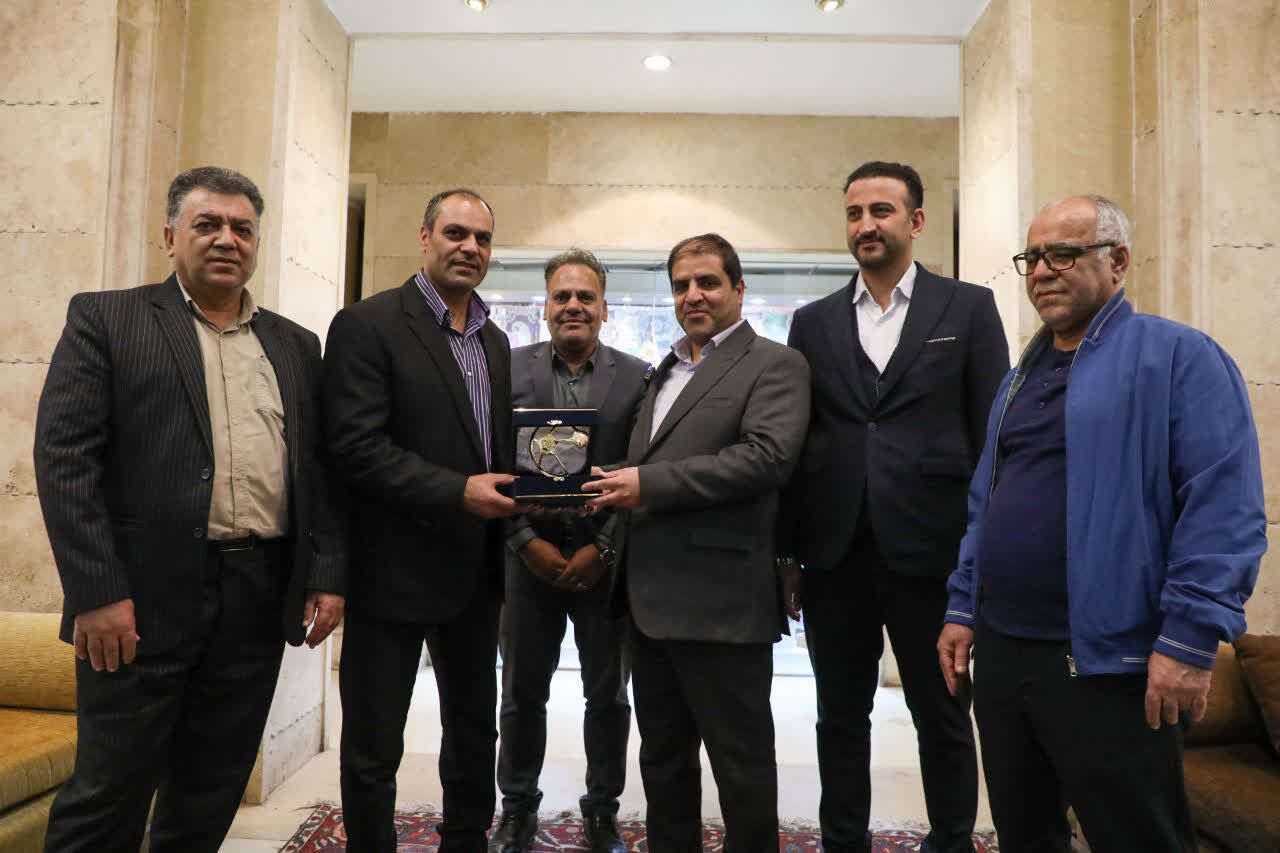
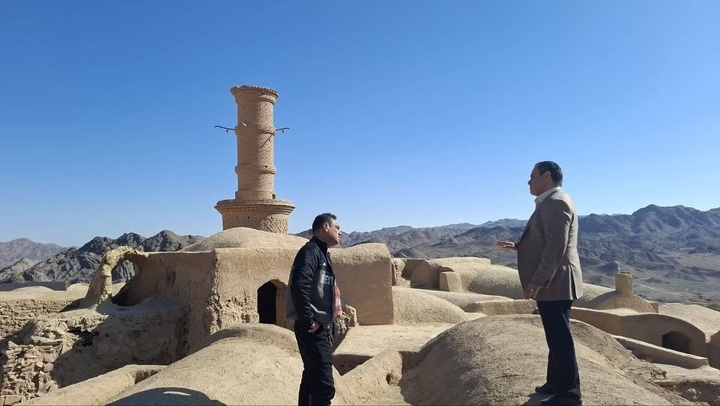
شنبه 06,دسامبر,2025